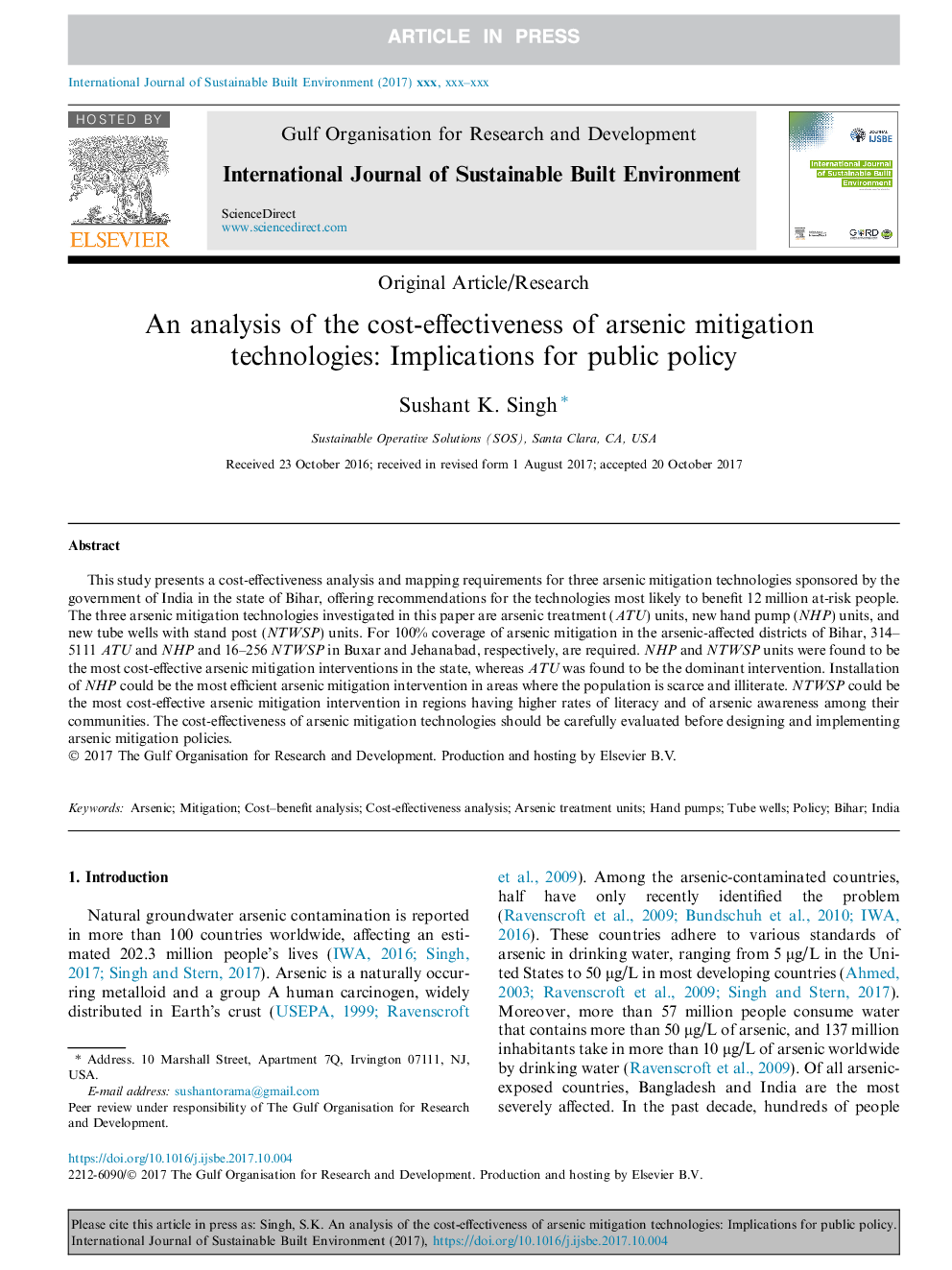| Article ID | Journal | Published Year | Pages | File Type |
|---|---|---|---|---|
| 6659505 | International Journal of Sustainable Built Environment | 2017 | 14 Pages |
Abstract
This study presents a cost-effectiveness analysis and mapping requirements for three arsenic mitigation technologies sponsored by the government of India in the state of Bihar, offering recommendations for the technologies most likely to benefit 12 million at-risk people. The three arsenic mitigation technologies investigated in this paper are arsenic treatment (ATU) units, new hand pump (NHP) units, and new tube wells with stand post (NTWSP) units. For 100% coverage of arsenic mitigation in the arsenic-affected districts of Bihar, 314-5111 ATU and NHP and 16-256 NTWSP in Buxar and Jehanabad, respectively, are required. NHP and NTWSP units were found to be the most cost-effective arsenic mitigation interventions in the state, whereas ATU was found to be the dominant intervention. Installation of NHP could be the most efficient arsenic mitigation intervention in areas where the population is scarce and illiterate. NTWSP could be the most cost-effective arsenic mitigation intervention in regions having higher rates of literacy and of arsenic awareness among their communities. The cost-effectiveness of arsenic mitigation technologies should be carefully evaluated before designing and implementing arsenic mitigation policies.
Keywords
Related Topics
Physical Sciences and Engineering
Chemical Engineering
Chemical Engineering (General)
Authors
Sushant K. Singh,
